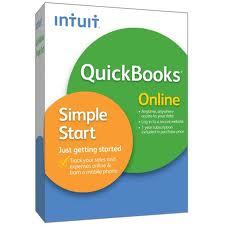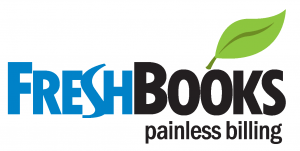Mohit Tater's Blog, page 624
May 20, 2018
How to Reset a Bad Work Day

Every day is not all sunshine and daisies. All of us have our ups and downs. The reasons could be complex or simple. It could be nothing or everything. When you can take a break from your routine, then well done, because that break will be your chance to recover. But most of us cannot afford a break when we choose to. We need troubleshooting methods for ourselves when we have our bad days and when they extend into our work lives as bad work days.
1. Accept it because when happy days are ours to keep, even our glum days are ours. Accepting it is the first step for a sooner recovery from a bad mood. It is not wrong to get glum. It is very much a natural phenomenon and happens to every living being on earth. Accept it, understand yourself, try to find a solution to the cause of the bad mood (if you are sure of the cause) and this will actually induce high intensity focus and thinking which is a really good thing.
2. Compartmentalization. Learn to sort different parts of your life like home, friends, family, friends, hobbies into separate compartments. So, even after a bad work day, you can leave that at work, go out of your workplace, relax or have a crazy night out. You can then process the day’s events after that tiny but much needed break.
3. The Venting Session. Call your best friend or the person you want to and rant, grumble and get it all out of your system. Don’t carry it over or keep the session too long. Moan for some time and then forget it or solve it and get yourself happier.
4. If the reason for the bad work day is some work related stress, try analyzing it, evaluate it and how it is supposed to have an impact on you. List out the pros and cons, get some advice if you need or some opinions. If the number of disadvantages seems higher, get a plan straightened to work this stress causing idea to your advantage and loosen yourself.
5. Get out. Walk under the sun, get some ice cream or fries. Take a walk around the park or window shop in the nearby mall. Get coffee, have an hour’s gossip with your besties, listen to music, watch a comedy show, call home, pet animals or have a conversation with a kid. This will have your dopamine levels increasing, getting your mood back to happy and smiling.
6. Have a conversation with your boss, talk to your coworkers in a polite manner. Make sure to avoid any kind of tiff or argument. Remember to be the bigger person. Think twice before you say something out loud or take any action. Do not mix personal and professional lives together.
Nothing remains for the permanent future. So, even the bad days will change to happy days. Remember to ensure you are caring for yourself including the factor of resting when you are ill. Rest assured, you can grab your work and just enjoy every moment of it.
The post How to Reset a Bad Work Day appeared first on Entrepreneurship Life.

Kickstart your Business by being Aware of the Finance Options

Every business will have the hunger to grow and it is through an infusion of cash that you can help the company move towards a positive path. When you think of kickstarting your own business, you have to take resort to business loans as they seem to be the best way to finance the growth and the other associated expenses. However, while there are installment loans like Northcash installment loans, there are few factors that a business owner should keep in mind before applying for such loans.
It isn’t a complex or a complicated process to apply for a business loan but if you prepare in a better way, this will guarantee chances of success. If you follow the right steps and opt for a lender who focuses on SMEs, you can simplify the process of business funding. There are several lenders who offer easy access to the best loan for a business. Here are few things that an entrepreneur can keep in mind.
Choose factoring
Factoring is nothing but a method of finance where the company sells off the receivables on a discount in order to receive upfront cash. This is often used by the companies which have poor credit score or by entrepreneurs who are apparel manufacturers who have to fill up orders way before they get paid from their customers. But the only thing is that this is one of the costliest ways of funding your business. If you have to pay a 2% fee to obtain funds 30 days before time, this is equal to an annual interest rate of around 24%. Economic dilemma has forced the companies to take a look at alternative financing options.
Get a loan from the bank
Although it is a fact that lending standards have gotten stricter yet it is also true at the same time that banks like Bank of America and JP Morgan Chase have set aside additional funds for lending to small businesses. So why wouldn’t you think of applying to them?
Raid your 401(k)
Are you someone who is unemployed but who is thinking of starting your own business? Have you accumulated enough funds in your 401(k) account over the years of your employment? With the tax code provisions, you may tap into this account without having to pay a dime in the form of a penalty fee. In case you follow the right steps, it is simple enough but the process is legally complex and hence you will require someone with experience. One thing to keep in mind is that you’re using your retirement funds and if things don’t go as planned, you will lose your business and your nest egg.
Borrow money from your future earnings
Are you ambitious, young and you’re eager to make a bet on the future earnings? There are many eminent people who are trying their best to raise money in this manner. You can offer a certain percentage of your future lifetime earnings via an online marketplace and exchange it for upfront cash. By swapping 5% of your future lifetime earnings for $60,000, you can get money.
Therefore, now that you’re eager to set up your own business, you should take into account the above mentioned factors through which you can help finance your business in the best possible way.
The post Kickstart your Business by being Aware of the Finance Options appeared first on Entrepreneurship Life.

May 18, 2018
Beware of these Myths about SIP Investing

Investors are often deterred from the right investment choices because they hear many opinions from different individuals. However, such opinions are mostly formed on half-baked truth and are based on a foundation of myths. The sad news is that these myths are popularised to such a large degree that they have almost become the truth.
There are certain myths surrounding SIPs (Systematic Investment Plans) as well. While experts and advisors try their best to do away with such notions, these myths still persist.
What you will be reading further is an attempt to debunk these myths and bring SIP closer to the facts:
Myth #1: SIP Investments Are Short-Term Investments
This is the most common myth surrounding SIP investments, especially when it comes to SIPs in equity funds. People are quite cynical about investing a regular sum in a mutual fund SIP, especially in equities. The myth is that equity investments are for short-term and debt investments are for long term.
The Reality:
The reality is vice versa. Debt products generate good returns in favourable or high interest rate cycles. However, equities provide opportunities to generate wealth in up cycles and buy cheaper in down cycles. Investing through SIP for long-term actually does a good job of cost averaging.
Thus, make sure to run your SIP investment for the long term to take advantage of the market volatility.
Myth #2: SIP Is Only for Small Investments
SIP investments mean investing small sums regularly. However, it does not infer that SIP is for small investors only.
The Reality:
In general, SIP investment means- regular, disciplined, and long-term investment done with the help of an autopilot mode. It is meant to provide an opportunity for all – investors with limited as well as high savings.
Whether you are a High Net-worth Individual (HNI) or a small investor,whether you invest Rs 1,000 a month or Rs 10,000 a month, rupee cost averaging works alike for everyone.
Myth 3: SIP Returns on An Absolute Basis Are Low
Many investors ignore the XIRR (Internal Rate of Return) of their investments and only look at absolute returns. Generally, in a short-term SIP, the absolute return may look lower than the XIRR or CAGR (Compounded Annualised Growth Rate) returns.
The Reality:
XIRR a better way of looking at your investment returns, when you are comparing it across other asset class yields. Remember that in a SIP investment, an entire lump sum is not invested in one go. Investments through the SIP mode are made at various points in time.Since there are no one point-to-point annualised returns, the returns are better captured using XIRR (taking into account the varying times of investment).
Myth#4: If You Agree On A Particular SIP Amount Every Month, You Cannot Change It
Another common myth about SIP investments is that once you commit to investing a particular amount, you cannot change it. People believe that if they change the amount, they would be penalised. This is untrue.
The Reality:
If you decide to invest Rs 1,500 a month through a SIP and want to change it to Rs 1,000 or Rs 3,000 next month, you have the total flexibility to do so. There is no penalty or charges levied for the same.
Myth#5: There Is Penalty Levied If SIP Is Stopped In Between
The Reality:
You can continue or stop a mutual fund SIP at your own convenience. There is no penalty or charges for stopping your SIP investment. You only need to provide a duly signed written request for the same.
Conclusion:
People have different opinions when investments are considered, especially SIP investments. However, it is necessary to examine the degree of truth in it before the myths are accepted as facts.
SIPs have been suffering the blow in the hands of the myths, worrying investors about the rumours that are floating. Instead, know the truth, and let your rational mind to shift from myths to facts. The unearthed facts should bring you a step closer to investing in SIP.
So, know your long terms goals, understand your risk profile and get set with your SIP investments!
The post Beware of these Myths about SIP Investing appeared first on Entrepreneurship Life.

May 15, 2018
The Best Cloud-Based Online Accounting Software
Over the past couple of years, I’ve moved a lot of my traditional “software” based tasks to the cloud. You can read about it here: I Started Moving My Finances and Business To The Cloud. There are so many great tools that I have been able to take advantage of, including Google Docs and Google Apps email.
However, over the past year, one area that I have been struggling with is finding a good cloud based accounting software that could complete with QuickBooks. Well, after searching and searching, and trying out various companies and options, I’ve finally come to a conclusion.
** I just updated this in April 2013 with the latest from these companies. I’m always experimenting with new cloud-based software, so if you have any suggestions, please let me know in the comments!
Online Accounting Software Choices
 Quickbooks Online – Since Quickbooks has been my bread and butter accounting software choice for over 5 years, I’d thought I’d look into using them in the cloud. The great thing about Quickbooks Online is that is has all the features of Quickbooks Pro software, just available anywhere. As a result, you can integrate it with other Quickbooks applications, like Payroll and more.
Quickbooks Online – Since Quickbooks has been my bread and butter accounting software choice for over 5 years, I’d thought I’d look into using them in the cloud. The great thing about Quickbooks Online is that is has all the features of Quickbooks Pro software, just available anywhere. As a result, you can integrate it with other Quickbooks applications, like Payroll and more.
The downside of Quickbooks Online is the price: the cheapest option starts at $12.95 per month, with more features available at $26.95 per month and $39.99 per month. To get payroll included, you jump up to $52.76 per month and $63.18 per month.
Even the cheapest option is $155 per year, which is just as expensive as purchasing Quickbooks Pro (which currently retails for $183.95). If you use Quickbooks online for over a year, it just isn’t worth it.
However, Quickbooks Online does offer a current 30 day free trial of its software, so you can give it a go without committing.
 Freshbooks – Freshbooks was recommended to me by a consultant that I used on a project. He was very happy with it, especially the online invoicing part. As a customer, I also thought that the online invoicing was a pretty neat aspect. Freshbooks started with the easy to use online invoicing, and now has a full suite of accounting aspects to keep track of everything. It is very client focused – with calendars for organization and ways to collaborate.
Freshbooks – Freshbooks was recommended to me by a consultant that I used on a project. He was very happy with it, especially the online invoicing part. As a customer, I also thought that the online invoicing was a pretty neat aspect. Freshbooks started with the easy to use online invoicing, and now has a full suite of accounting aspects to keep track of everything. It is very client focused – with calendars for organization and ways to collaborate.
The good thing about Freshbooks is that not only can you try it free, but they have a free option that lets you manage up to 3 clients. It’s not much, but it does give you a sense of what it would be like to use full time.
The downside, once again, is the ongoing cost of Freshbooks. To manage 25 clients, it now becomes $19.95 per month, and for unlimited clients, it jumps to $29.95 per month. If you want team management functions, it runs $39.95 per month. So, for the basic level, you will pay $239 per year to manage 25 clients.
Here’s what users have to say:
[WPCR_SHOW POSTID=”1356″ NUM=”1″ SNIPPET=”” MORE=”Read More Reviews of FreshBooks” HIDECUSTOM=”0″ HIDERESPONSE=”0″]
 Kashoo – Kashoo was the next system I tried out, and it interested me because it had automatic bank import functions to import and categorize your transaction (I love automated). It also had the basic accounting functions like Quickbooks, but was a little more automated. The great thing is that it can import your bank information automatically, which is helpful and time saving.
Kashoo – Kashoo was the next system I tried out, and it interested me because it had automatic bank import functions to import and categorize your transaction (I love automated). It also had the basic accounting functions like Quickbooks, but was a little more automated. The great thing is that it can import your bank information automatically, which is helpful and time saving.
The biggest drawback was the lack on invoicing available on Kashoo. Instead, they want you to partner with Freshbooks to invoice your customers, or just manually enter the sales.
The good thing about Kashoo is that they have a free level, that includes all the accounting software (non-automated), as well as iPhone and iPad apps (which was very handy). However, to get access to the good features, like templates, you must sign-up for the first level of service, which is $10 per month. They also have an unlimited team version for $20 per month, which is also what you need to get if you want payroll integration.
At $10 per month, or $120 per year, this is the cheapest option of the paid online accounting programs so far, and it is pretty good in terms of features available as well.
 Outright – Outright was the final choice for paid programs, and it is neck and neck with Kashoo. The great thing about Outright is the automation – everything is automatically pulled from your bank accounts and categorized. This is even included in the free option.
Outright – Outright was the final choice for paid programs, and it is neck and neck with Kashoo. The great thing about Outright is the automation – everything is automatically pulled from your bank accounts and categorized. This is even included in the free option.
The drawback of Outright was that they charge $9.95 per month for their first and only level of service, but it is this level that has access to all the reporting you would want. Otherwise, all Outright does is keep track of the basic profit and loss. I also found it a little more difficult to use that Kashoo. Outright was that they charge $9.95 per month for their first and only level of service, but it is this level that has access to all the reporting you would want. Otherwise, all Outright does is keep track of the basic profit and loss. I also found it a little more difficult to use that Kashoo.
 Bean Cruncher – Bean Cruncher is one of the newest online bookkeeping and accounting programs out there, and I was glad I stumbled up on. What I really like about Bean Cruncher is the speed and interface. Their online system runs quick, which is great – especially when you are entering a lot of invoices. Their main dashboard is also really helpful, with all of the key data displayed right when you log in.
Bean Cruncher – Bean Cruncher is one of the newest online bookkeeping and accounting programs out there, and I was glad I stumbled up on. What I really like about Bean Cruncher is the speed and interface. Their online system runs quick, which is great – especially when you are entering a lot of invoices. Their main dashboard is also really helpful, with all of the key data displayed right when you log in.
The only thing holding me back from Bean Cruncher is the price – it starts at $9 for up to 150 customers, then $19 for 500 customers, and $29 for unlimited customers. In my business, I’d hit 150 customers pretty quickly, because I get a lot of one-time customers. This was the main problem I ran into with Freshbooks. Even though the software is great, it’s hard to beat free.
 Xero Online Accounting Software – I was turned on to Xero by the readers in the comments below (thank you)! Of course, when someone mentions that this is the best online accounting software out there, I have to go check it out for myself. And I have to agree – this is the most power online accounting software I’ve found to date. The features and services of this program rival Quickbooks, which is impressive. There is also easy integration for bookkeepers and accountants.
Xero Online Accounting Software – I was turned on to Xero by the readers in the comments below (thank you)! Of course, when someone mentions that this is the best online accounting software out there, I have to go check it out for myself. And I have to agree – this is the most power online accounting software I’ve found to date. The features and services of this program rival Quickbooks, which is impressive. There is also easy integration for bookkeepers and accountants.
Xero is a bit different from most online accounting software in that they are targeting accountants and bookkeepers as their target audience – they want accountants to use the software, and setup their clients on the program. You can still use the software if you’re a small business, and it is still great.
Once again, pricing matters. Since this is the most powerful online software, I wasn’t surprised to see the prices be high. The entry level is $19 for 5 invoices per month. The next level up covers pretty much everything you need, at $29 per month you get 100s of invoices. They do offer a $39 per month tier, but you only need this if you do multi-currency accounting.
Best Online Accounting Software
 Wave Accounting – My personal pick for the best online accounting software is Wave Accounting. It took me a long time to find this company, and they were actually referred to me by a Twitter follower! However, I’m glad I found them.
Wave Accounting – My personal pick for the best online accounting software is Wave Accounting. It took me a long time to find this company, and they were actually referred to me by a Twitter follower! However, I’m glad I found them.
This company does it all – invoicing (you can even send them to customers online), accounting, and reporting. And the best part, is that it is free. There are no costs for using Wave, and they maintain a business model similar to Mint, where they are paid through affiliate sales.
As of 2013, they also started an online payment system for their invoices, which does cost money, but the rate is cheap – 2.9%. If you’re sending invoices and need to accept credit cards, this is a great solution that continues to distinguish Wave as one of the best online accounting programs out there.
I’ve supported them since these affiliates also provide good deals on business related products. If you are interested in an online accounting program, Wave Accounting is the best option to check out.
Want this in a clear, comprehensive, easy to present version? Check out our SlideShare presentation:
The post The Best Cloud-Based Online Accounting Software appeared first on Entrepreneurship Life.

Why You Should Start Blogging

It is good for you to have hobbies. Whether they are hobbies that keep you active or allow you to relax on the couch, your body needs you to do something throughout the day. There are so many different hobbies available it can be hard to figure out where to start.
But there is one type of hobby that is not just good for mentally, it is also gratifying once you get going. We’re talking about blogging. A blog is where someone posts on a regular basis content that reflects a theme. Whether it be a blog about Ottawa real estate or a personal health journey, you can blog about anything you want.
So whether you have thought about it or not, here are four reasons why you should start blogging.
Improve Your Writing
Blogging means you have to write. What better way to improve your writing than by, well, writing? When you write you are communicating with those who read it. You are telling them a story about yourself or a specific topic you want them to know. It is a way to engage and connect with your audience.
So the more you blog, the more you write and the better of a writer you will become. As you improve, you may notice more and more readers are paying attention.
Blogging Gives Purpose
When you set up a blog, there is a reason behind it. Whether it is a niche type blog where you talk about a particular topic, giving advice on something you are knowledgeable about or telling a story of your day to day life, there is a purpose to your blog. You now have something to look forward to in the day, week or month, depending on how often you are contributing. You will soon start to notice your blog becomes a habit in your daily life.
Develop Good Habits
A blog is a way to stay focused throughout the day. Once you start, your blog is always in the back of your mind. What should I write about today or what do I want to share with my audience?
To maintain a popular blog, you need to contribute to it on a regular basis. You will need to stay organized and set up a schedule for when to write, edit, publish and engage with your audience. This may require getting up earlier, freeing yourself from distractions and getting rid of habits that waste time.
You Can Make Money
Did you know your hobby of a blog can actually make you money ? Whether that is your intent or not, a well-established blog can end up making a decent amount of coin. It may take some time and dedication to get to that point, but that first paycheque will be all worth it.
So if you are debating about starting a blog, go for it. There are many reasons why you should start one, and very few as to why you shouldn’t. Inspire yourself and others, build better habits, improve your skills and even make a few dollars on the side. Once you start,you will probably become addicted to your blog.
The post Why You Should Start Blogging appeared first on Entrepreneurship Life.

How to Make Money in the Booming Esports Market

If you have not noticed already, the cash flow in the esport industry is real and it’s growing fast. Prize pools in tournaments are getting bigger for every year as more viewers and sponsors are attracted.
What was once seen as a hobby has become a serious career move and one that can pay really well for the fortunate few. Only 10 years ago, playing as a professional esport player was more about the journey and the status than the money.
Players were far from being able to live a luxurious lifestyle even as world class players, they got paid to survive. Getting money for food and rent while playing video games all day long was in itself at the time a “cool thing”.
Now, good players in the biggest teams can make some serious cash, after looking at the website esportsearnings.com you might consider a career shift and starting gaming.
However, you’re probably not on the verge of becoming an esport PRO. Don’t let this get you down though, there are many other ways you can benefit on this booming market. Below we will give you some ideas that might put your head into the game.
Start your own stream and host esport games
One of today’s most obvious income sources within esport is made through media channels like streaming on Twitch. The demand for watching games is getting bigger for every day and the experience as a spectator is as well getting better all along.
Here is an opportunity to build authority and get some eyeballs within your own esports media channel. If you start of streaming and commentating on live games of professional teams and deliver an entertaining experience for the viewers you can build up a good income source from sponsors like esport betting companies and other esport businesses that need exposure.
Become the renaissance man of esport betting
If you already know more than most people about a certain esport game (preferably one of the bigger ones). You can get down to work and do what most people don’t, the next level work.
If you make it your call in life to know everything about every player, team and event, you will become the renaissance man or, an esport oracle if you will.
The availability and access for betting on esport has also been booming as the list of new esport betting sites just increases. Many new operators offer advanced live betting opportunities that open up new lucrative ways to take advantage of the odds based on knowledge that in the long run is not so different from being a day trader or investor.
Invest in esport companies
If you feel you don’t have the talent to host esport games and be the Jimmy Fallon of esport, or becoming the rain man of esport betting you still have options.
Let the money do the work. Becoming an esport investor requires some capital from your end, but you call always start small and work your way up.
There are several companies that are going on the offense when investing in esport, if you study which these companies are you can jump on the wagon by investing in their stocks.
The post How to Make Money in the Booming Esports Market appeared first on Entrepreneurship Life.

May 13, 2018
5 Movies every Entrepreneur must Watch and Why?

Are you an entrepreneur steeping into the world of business? Here are five movies that every new start-up guy or girl should watch. These are movies which tell the story of people who have pursued their dreams and wonderfully succeeded in building up their own life. They can give you some pointers on business, while inspiring you to choose your own life goals and fulfill them.
Wall Street (1987)
IMDb : 7.4
Wall Street tells the story of the young stock broker Bud Fox as he associates himself with the wealthy and shrewd Gordon Gekko. Together, they amass wealth through illegal trades but when Gekko crosses a line, Bud has to do all he could to save hundreds of men from being left unemployed. The film stars Michael Douglas as Gekko and Charlie Sheen as Bud leading the plot.
The Social Network (2010)
IMDb : 7.7
The Social Network, directed by David Fincher, is a biographical drama based on the life of Mark Zuckerberg, the founder and CEO of Facebook. Zuckerberg’s life serves as an inspiration to the millions of young entrepreneurs who are setting out with their own business. The movie tells the beginnings of Facebook, which happened while Zuckerberg was still a student at Harvard University and the allegations of intellectual theft for which Zuckerberg was tried in court by his upperclassmen from Harvard.
Glengarry Glen Ross (1992)
IMDb : 7.8
This James Foley film is an adaptation of the Pulitzer winning play of the same name written by David Mamet. The film tells the story of the competition and treacheries in the life of four sakes men who are made to compete against each other at the risk of their jobs. They fool their customers and sell market shares just so they could save their sinking personal lives. The story shall inspire any one and tell you how hard work pays off.
Office space (1999)
IMDb 7.8
Ron Livingston in Office Space plays PeterGibbons a software corporate employee who hates his job.After undergoing a hypnotherapy, in the middle of which his therapist dies, Peter refuses to be bullied or to do over time and plays computer games during office hours. By some lucky chance, he gets promoted by the consultants. Eventually, when downsizing threatens his friends, he plans to take revenge on the firm along with two of his friends. The film was written and directed by Mike Judge. It aspires the viewers to go after their dreams and leave boredom behind.
The Pursuit of Happiness (2006)
IMDb 8.0
The Pursuit of Happiness is the year-long struggle which entrepreneur Chris Gardner goes through. Gardner and his son are beautifully portrayed by Will Smith and his real-life son Jaden Smith. Chris Gardner goes through a very bad year, with his wife leaving him and his little boy for a better life. As life turns upside down for him, Gardner has to do everything he can to make things right. The film is a biographical drama based on the life of Chris Gardner and was directed by Gabriele Muccino.
The post 5 Movies every Entrepreneur must Watch and Why? appeared first on Entrepreneurship Life.

May 11, 2018
Your Company Needs to Be on These 8 Third-Party Websites

Have you Googled your company recently?
Try it. Odds are, you’ll find a litany of familiar first- and second-page results. You might be surprised or shocked by a few. Maybe you’ll see one or two downright derogatory results that need urgent attention.
Many business owners who try this exercise are just as shocked, if not more so, by what they don’t see when they Google their companies.
For most small businesses without extensive press mentions, blue-chip platforms and sites like Facebook, LinkedIn, and Yelp are as close to guaranteed first-page placement as one can get in this topsy-turvy SEO world. If you’re not listed on such sites, you’re leaving valuable exposure (and potentially lucrative leads) on the table.
Virtually every small and midsize business should target these eight high-quality, heavily trafficked third-party websites and platforms. How many are you missing out on?
You almost certainly have a personal LinkedIn profile. Whether you keep it in good shape is another matter, one not particularly germane to this discussion.
If your company doesn’t yet have a corporate LinkedIn page, it’s time to get cracking. Marketing Land identifies five simple steps to optimize your LinkedIn company page:
Optimization Pre-Planning: Focus on consistency, accuracy, and semantics. Consistency means keeping your LinkedIn profile’s content consistent with your brand’s; there should be little to no daylight between your website and LinkedIn profile, for instance. Accuracy is as it sounds; you need to present accurate, reliable information. Semantics describes industry-specific keywords and common search terms associated with your company; you’ll want to conduct thorough keyword research before continuing.
Visual Optimization: Fully optimized LinkedIn profiles boast pages targeted to customer metrics like geography and job function; hyperlinked banners where appropriate; and embedded video content.
Attract Followers: This is part art, part science. Once low-hanging opportunity: simply getting all your employees up and running on LinkedIn. Once their profiles are connected to your company page, you’ll have first-degree access to their connections.
Create and Share Content Regularly: There’s a loose but clear correlation between publishing frequency and engagement. In other words, prolific publishers tend to attract more engagement to their posts. Quality matters, too, so be sure to work with sharp copywriters.
Attract Recommendations: Recommendations flow naturally to high-quality company pages, but it doesn’t hurt to give your audience a nudge. Include appropriate calls-to-action in longform content and short posts alike, and encourage employees and vendors in offline settings to make their feelings known on your LinkedIn page.
YouTube
YouTube is the original online video hub, and it hasn’t yet lost its luster. Even if you run a perfectly competent embedded Facebook video game, your company YouTube video should serve as a hub for advertorial content, explainers, and live streams that position you and your team as thought leaders.
Facebook is even more popular than LinkedIn — actually, by an order of magnitude — among individuals. With more than 2 billion active users, it’s the planet’s most popular social network.
Facebook is quite popular with small businesses too, especially consumer-facing, locally oriented shops that don’t have the resources or expertise to invest in a professionally designed and developed standalone website.
Facebook is free — you’ll never pay a membership fee for your page, and you’ll only face out-of-pocket expenses if and when you choose to pay for Facebook advertising.
Facebook is intuitive — you can almost certainly create your own Facebook page without professional assistance.
And, increasingly, Facebook is the first and only stop for consumers searching for products and services in their areas. If you haven’t yet set up and built out a Facebook Business page, the time has come.
Yelp
Contrary to popular belief, Yelp isn’t only for brick-and-mortar merchants that market within specific geographies. If you sell direct to consumers, you need a Yelp listing — period, end of story. Like Facebook, Yelp is super intuitive; you won’t need professional assistance unless you’re investing in a Yelp-based marketing campaign, which can be daunting for first-timers.
Manta
Manta is Yelp’s lesser-known cousin. It lives at the intersection of B2C and B2B, making it appropriate for a pretty wide range of businesses. Manta’s marketing tools are more accessible than Yelp’s, too, though you’ll have to pay to unlock premium features designed to maximize your company’s exposure. If you don’t have an in-house marketing team or external marketing partner, it’s worth the cost.
Crunchbase
Crunchbase is a hotbed for startups and early-stage investors alike, but you don’t need to be the Uber of your industry to find a home here. Crunchbase’s no-nonsense listings are appropriate for virtually any small to midsize service company. Don’t neglect its personal listings either; an individual Crunchbase profile goes a long way toward burnishing your credentials as an entrepreneur.
Twitter has gone through lots of changes over the past few years, but it remains an indispensable marketing channel for B2C companies seeking wider, more sophisticated audiences. Its SEO value can’t be discounted, either — even if you’re not a prolific tweeter, an active profile is almost certain to appear on the first search results page for your company’s target keyword(s). That’s half the battle right there.
Better Business Bureau
The Better Business Bureau predates all these other platforms. In fact, it predates the Internet.
While it’s no longer the grand arbiter of business quality, BBB remains an essential marker of legitimacy — one with impressive search visibility to boot. Make the relatively modest investment in BBB accreditation and you’ll set your company apart from competitors whose founders simply couldn’t be bothered.
Go Where the Leads Are
Do you know where your leads are?
For many companies, these eight social media platforms, directories, and catch-all websites collectively hold the answer to that question.
For others, the answer is more elusive. Virtually every business can find slivers of its audience on some or all of these sites, to be sure. But, depending on what your company does and who its products and services are designed for, you may be leaving leads on the table when you focus on them alone.
There’s no easy remedy for “missing” prospects. If you haven’t already done so, conduct a thorough market analysis that includes a detailed review of your competitors’ prospecting practices. Adopt their best ideas. Shelve the rest. Incorporate what works into an original marketing plan. Set it in motion. And never, ever, stop iterating.
You got this.
The post Your Company Needs to Be on These 8 Third-Party Websites appeared first on Entrepreneurship Life.

May 10, 2018
Payment Processing for Startups: What You Need to Know
 If you want your startup to make money, you need to be equipped to accept any kind of payment your customers want to give you. These days, that means you’ll need to take more than just cash and checks; today’s customers want to pay with credit and debit cards, and corporate clients may want to pay with ACH debits instead of paper checks (although paper checks are still a preferred payment method for many companies, as well as for consumers who want to make large payments).
If you want your startup to make money, you need to be equipped to accept any kind of payment your customers want to give you. These days, that means you’ll need to take more than just cash and checks; today’s customers want to pay with credit and debit cards, and corporate clients may want to pay with ACH debits instead of paper checks (although paper checks are still a preferred payment method for many companies, as well as for consumers who want to make large payments).
You’re going to need a payment processing solution that allows you to accept payments of all types, especially if you’re running a retail storefront of any kind, and that means you need a merchant services provider. Here’s what you need to know about choosing a provider and qualifying for a merchant services account.
You Need a Merchant Services Provider
If you’re starting a business and you don’t have a merchant services provider or don’t plan to accept credit and debit card payments, you could be missing out on a lot of sales. You might be able to skate by if you’re dealing only with corporate clients who will want to pay by check. However, if you have any kind of retail storefront or plan to sell goods and services to members of the public, you’re going to need a merchant services provider to help you accept credit card payments — and you may even need one if you’re dealing with corporate clients.
Cash is quickly becoming old-fashioned as a method of payment. Credit and debit cards have become just as common as paper money, and lots of people prefer them to cash. Sixty-six percent of point-of-sale (POS) transactions are performed with credit or debit cards, and one-quarter of Americans don’t carry cash at all. One-third of Americans aged 18 to 35 don’t carry any cash, and among those who do carry cash, most carry no more than $25 in their wallets. So, if you want your customers to make impulse purchases, or to make purchases at all, you’ll need to be able to accept the credit and debit cards they prefer to pay with.
How to Choose a Merchant Services Provider
When it comes to choosing a payment processing company, you might be tempted to just go with the bank that handles your business accounts. However, that might be a mistake because large banks often charge more than merchant services providers who specialize in payment processing. Fees might seem low on paper, but they can add up over time and with a large volume of transactions, so you want to pay as little as possible.

You’ll want to choose a provider based on the size of your business and the volume of your transactions because the fees you’ll pay will vary depending on how many transactions you’re processing and how much revenue you’re generating. You’ll also need to consider how you’ll be accepting payments, whether in person at a retail POS, over the phone, through an online web store or all three. Fees may vary depending on what methods you’re using the accept payments but will range anywhere from 1.75 to 2.9 percent of the transaction price, plus an additional flat fee which is typically less than a dollar per transaction. Shop around for the best price, and don’t forget to ask how long it will take payments to hit your bank account as this will affect your cash flow.
Qualifying for a Merchant Services Account
As a startup, your business might be considered high-risk by merchant services providers, but that doesn’t mean you can’t get a payment processing account. Good credit will help a lot here, and so will shopping around. You might need to pay a slightly higher fee to open your first merchant services account, but it’s worth it to offer your customers the convenience of multiple payment methods. Once you have some business history and a good record of responsibly using your merchant services account, you’ll be able to get lower fees and cheaper services.
A merchant services account is a must for any new business owner, especially if you plan to open a retail store. You’ll be able to offer your customers the payment options they need, and you’ll make more money as a result — and that’s good news for you, your investors and the future of your company.
The post Payment Processing for Startups: What You Need to Know appeared first on Entrepreneurship Life.

How To Beat The Loneliness of Entrepreneurship
 If you’re an entrepreneur,you’re ambitious, motivated and, on most days, believe down to your toes that you have a product or service worth sharing with the world. You’re not afraid to take on challenges, and you probably work more hours in a day than you thought was humanly possible.
If you’re an entrepreneur,you’re ambitious, motivated and, on most days, believe down to your toes that you have a product or service worth sharing with the world. You’re not afraid to take on challenges, and you probably work more hours in a day than you thought was humanly possible.
You may also be feeling isolated and lonely- and for good reason. Especially if you’re just starting out, you’re likely doing everything yourself. There’s no one to kick ideas around with, no one to take a break with, no one to give you a boost when you’re lagging, no one to get you out of your own head. If you’re working from home, as many entrepreneurs do, there’s not even anyone to nod at in the elevator.
It’s not only that working alone can come to be depressing and slow you down. It’s that ideas don’t usually come to you in a vacuum. Once you pour out everything you’ve been thinking about, it’s often very helpful to get a fresh perspective that points you to a new way of approaching an obstacle you haven’t been able to crack.
One way to do it is to amp up your business skills and take them to a higher level as well as learn new methods of critical thinking and creative problem-solving. You can do that by earning an online MBA while you’re getting ready to put your project on its feet. It will not only challenge you, it will give you a chance to interact with a like-minded community and keep you current on what’s going on out there.
In the meantime, here are some additional ways of beating the loneliness of entrepreneurship:
Take a Walk
It’s simple, it’s free, and you can do it any time at all. This isn’t just about the exercise, though a little activity in the fresh air is always a good thing. It’s about going outside and keeping your eyes open to the scenery and the people passing by. Don’t speed walk with your head down to check your Fitbit every other minute, and don’t talk on the phone, text or even listen to an audio book. Stop and look in a shop window, chat with someone, stay loose. You’ll return to your work with a clear head.
Work Somewhere Else
If you spend all your time hunched over your desk at home, give yourself a break and take yourself and your yellow pad or laptop to a coffee shop a time or two each week. Just having something else to look at when you pick your head up can be a refreshing change from seeing the same four walls every day.
Put Some Music on
Even surgeons listen to music in the operating room. Oddly enough, most choose classic rock, but some choose classical, some choose country, and you can choose whatever you like. Music can be calming or

it can be invigorating, but either way, it enhances focus and improves efficiency. If it works in life-or-death situations, imagine how it can help you in whatever you’re doing.
Meet up With People
Humans are social animals, and if you’re getting all your social contact from Twitter and Facebook, you’re missing out on the added benefits of real person-to-person interaction. Join a local business group, a bowling team, a wine club. Anything that will get you out into the world where you can hear different voices and different ideas.
Not a joiner? Then make sure you carve out time to see friends on a regular basis. Meeting up with people face-to-face is a different and fuller experience than limiting yourself to email. While you should be able to put your work out of your mind while you’re socializing- actually, it’s the point of it -a random comment from someone can spark your imagination about something you’re working on.
Take Yourself out to Lunch
Not every meal has to be cold leftovers eaten standing over the sink. If you’re bogged down in the middle of something, comb your hair and take yourself out. The work will still be there when you get back, but you’ll be in a better mood to tackle it.
The post How To Beat The Loneliness of Entrepreneurship appeared first on Entrepreneurship Life.




